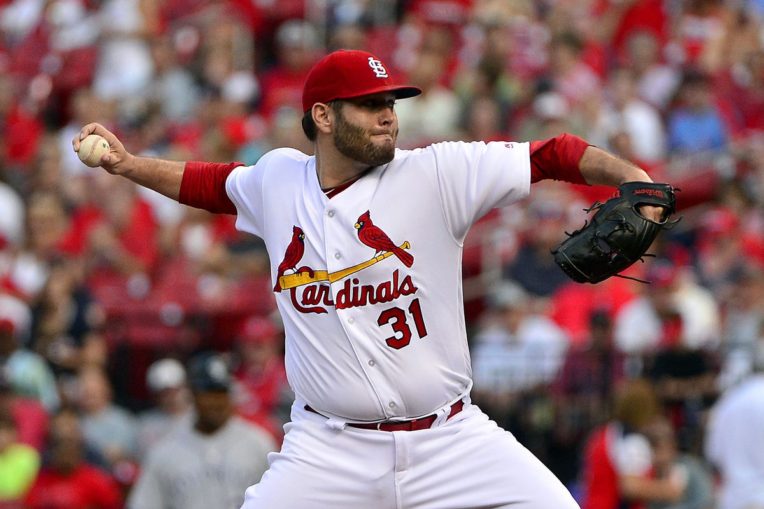
With the Mets inking infielder Todd Frazier to a two-year, $17 million deal Monday night, the focus has now shifted to potentially acquiring a starting pitcher.
On Feb. 3, Ken Rosenthal of the Athletic reported that the Mets might have interest in Alex Cobb or Lance Lynn if their prices drop.
Rich Coutinho of ESPN followed that up after the Frazier signing by saying the team isn’t done yet and that they are watching the pitching market very closely.
Let’s set our sights on these two pitchers for a moment and see why I would prefer Cobb to Lynn. I hope you all like numbers, because you’re about to see a metric ton of them.
Just last season, Lynn pitched 186.1 innings in 33 starts (just under 5.2 innings per start) with a 3.43 ERA in his first season back from Tommy John Surgery.
Conversely, Cobb pitched 179.1 innings in 29 starts (just short of 6.1 innings per start) with a 3.66 ERA in his first full year back from the same procedure.
Both pitchers fared some decline in their peripherals in 2017.
Lynn’s strikeout per nine innings (K/9) dropped to 7.39 in 2017, compared to 9.20 in his first full season in 2012. His walks per nine innings (BB/9) saw an increase this season, but not a significant one, up to 3.77 from a low of 3.18 in 2014. Given that it was his first season back, it’s reasonable to expect these to return closer to his career norms average of 8.46 and 3.40, respectively.
Lynn also had a stark difference in his batting average on ball in play (BABIP). His BABIP jumped to .244 in 2017 while his career mark is at .297. That results in greater disparity in his FIP and xFIP numbers (4.82 and 4.75), which indicate that Lynn fared quite a bit of luck just last season. The one thing Lynn did maintain was his ground ball rate (44.0 percent in 2017; 44.3 percent for his career).

The Mets may worry about whether or not Lynn fits in to the re-hauled pitching philosophy. In November, Marc Carig formerly of Newsday, currently The Athletic, reported that the Mets would be monitoring their starters the third time through the order.
Lynn saw himself reaching just under six innings per start. Last year Lynn endured many issues the third time through the order that he had not seen prior in his career. He had a 4.43 ERA accompanied by a .799 OPS and .337 wOBA when facing batters the third time through the order in 2017 (3.18 ERA .728 OPS .314 wOBA the first time and 3.13 ERA .635 OPS and .278 wOBA the second time).
This poses a serious concern for a team who may be going with a six-man rotation. If the Mets decide to run a man short on the bullpen rather than the bench, this could mean some serious innings for their relievers in 2017.
Nevertheless, I would like to dial it back for just a second. Lynn’s results the third time through the order may be a tale of two seasons. From April 6 to July 4, when facing batters the third time through the order, Lynn held a 6.86 ERA, .945 OPS, and a .385 wOBA, in 19.2 IP. But from July 9 to Sept. 28, those all dropped to 2.35, .660 and .290, in 23 innings pitched. I see this as a very stark difference. It would be worth noting that he did have an 80.4 LOB percent in that time, and his strikeout to walk ratio was just 1.1.
Cobb also saw a drop in his strikeout rate, dropping from 6.42 in 2017, from 8.41 in his second full season in 2013. The impressive thing about Cobb is that, despite striking out less hitters, he improved on his control and held his lowest walks per nine innings of his career at 2.21.
His 2017 marks in BABIP and LOB percent were very relative to his career norms. Cobb held a .282 BABIP and 75.7 LOB percent in 2017 compared to .287 and 74.8 percent for his career. I believe it goes to show how adept Cobb was a pitcher, considering that his ground ball ratio dropped to 47.8 percent from a 54.0 percent career mark. Nonetheless, he did hold a 4.16 FIP and 4.24 xFIP, which aren’t as drastic as Lynn’s marks, but still leaves a bit of room for correction.
Cobb stands out for me as a choice for the Mets in his performance the third time around the order. He held hitters to a 3.61 ERA with a .715 OPS and a .308 wOBA when faced the third round of batters (2.94 ERA, .681 OPS, .292 wOBA the first time; 3.71 ERA .700 OPS and .308 wOBA the second time). The differences are not as cautionary and it’s certainly a good outlook for what the Mets are looking for.
The differences in their halves of the season are not as profound, but Cobb did improve in the second half as well. From April 5 to July 2, Cobb’s results with batters the third time through the order were a 4.02 ERA, .725 OPS and .313 wOBA in 31.1 innings pitched. And from July 8 to Sept. 22, he held them to a 2.81 ERA, .697 OPS and .298 wOBA in 31.1 IP. Though, like Lynn, his LOB percent should be noted, which was a drastic 94.6, with just a .226 BABIP.
Nevertheless, I believe that some of the positive results could be from the fact that Cobb was able to gain control of his split-change (as he calls it) later in the season. A pitch that his doctors told him would be the last one to return to form.
There is definitely a lot of small sample size data mining in here, but I do believe there’s merit in looking into these results. Either way you slice it, there’s room for optimism and concern going forward with either pitcher, but if I were given the option of one of these guys on a shorter contract, I’d definitely take Alex Cobb.
All research done through FanGraphs.com















